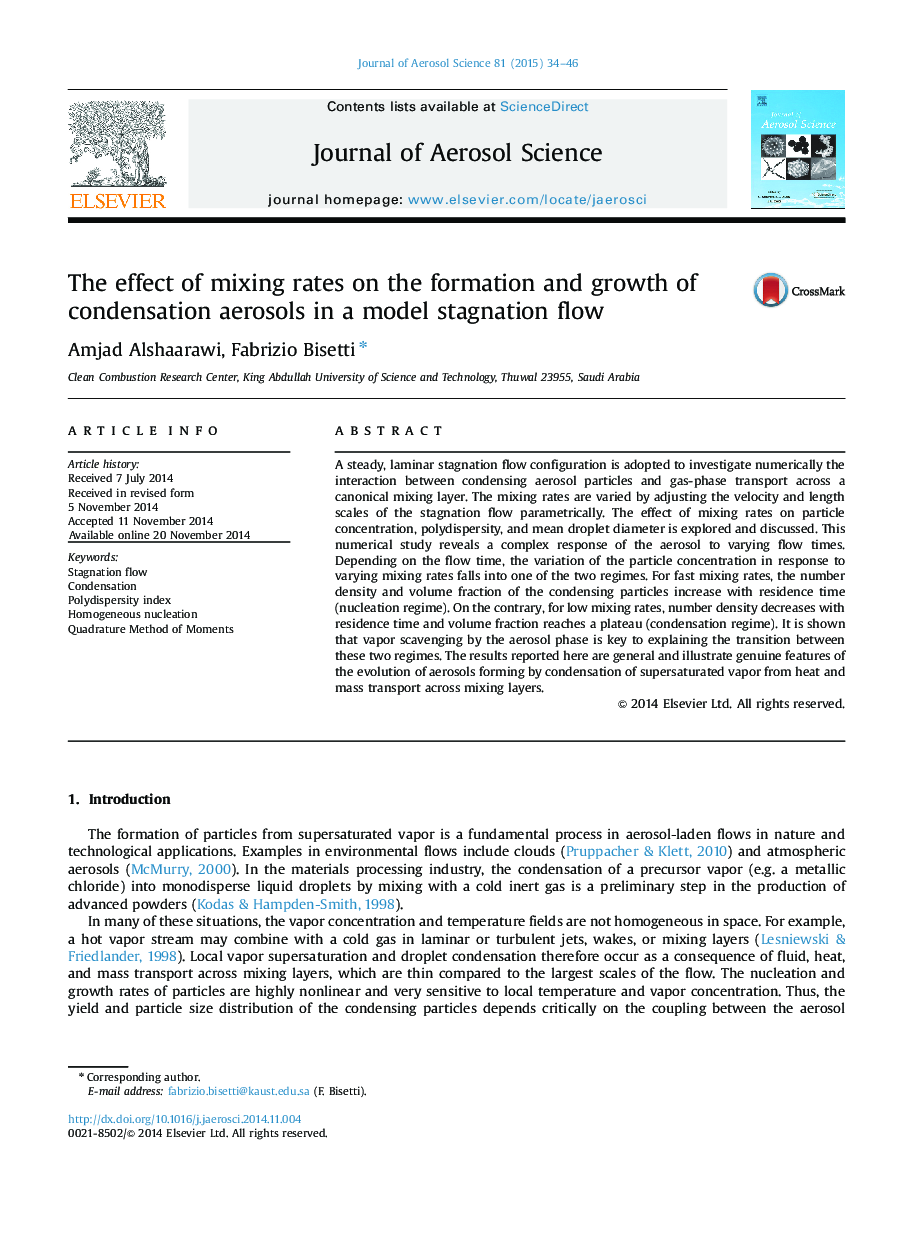| Article ID | Journal | Published Year | Pages | File Type |
|---|---|---|---|---|
| 4452271 | Journal of Aerosol Science | 2015 | 13 Pages |
•The effect of mixing rate on aerosol dynamics of condensing droplets is studied.•The implications on particle concentration and volume fraction are investigated.•A stagnation flow is chosen as a model for the transport across a mixing layer.•The dependence of these quantities on mixing rates falls into two regimes.•Vapor scavenging by the aerosol phase is key to the transition between these regimes.
A steady, laminar stagnation flow configuration is adopted to investigate numerically the interaction between condensing aerosol particles and gas-phase transport across a canonical mixing layer. The mixing rates are varied by adjusting the velocity and length scales of the stagnation flow parametrically. The effect of mixing rates on particle concentration, polydispersity, and mean droplet diameter is explored and discussed. This numerical study reveals a complex response of the aerosol to varying flow times. Depending on the flow time, the variation of the particle concentration in response to varying mixing rates falls into one of the two regimes. For fast mixing rates, the number density and volume fraction of the condensing particles increase with residence time (nucleation regime). On the contrary, for low mixing rates, number density decreases with residence time and volume fraction reaches a plateau (condensation regime). It is shown that vapor scavenging by the aerosol phase is key to explaining the transition between these two regimes. The results reported here are general and illustrate genuine features of the evolution of aerosols forming by condensation of supersaturated vapor from heat and mass transport across mixing layers.
